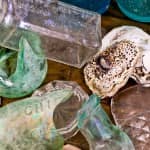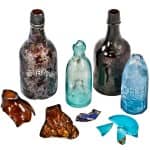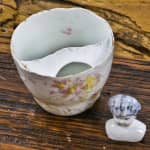buried remnants offer greater insight into the daily lives of 19th century chicagoans
This entry was posted on June 22 2016 by Eric
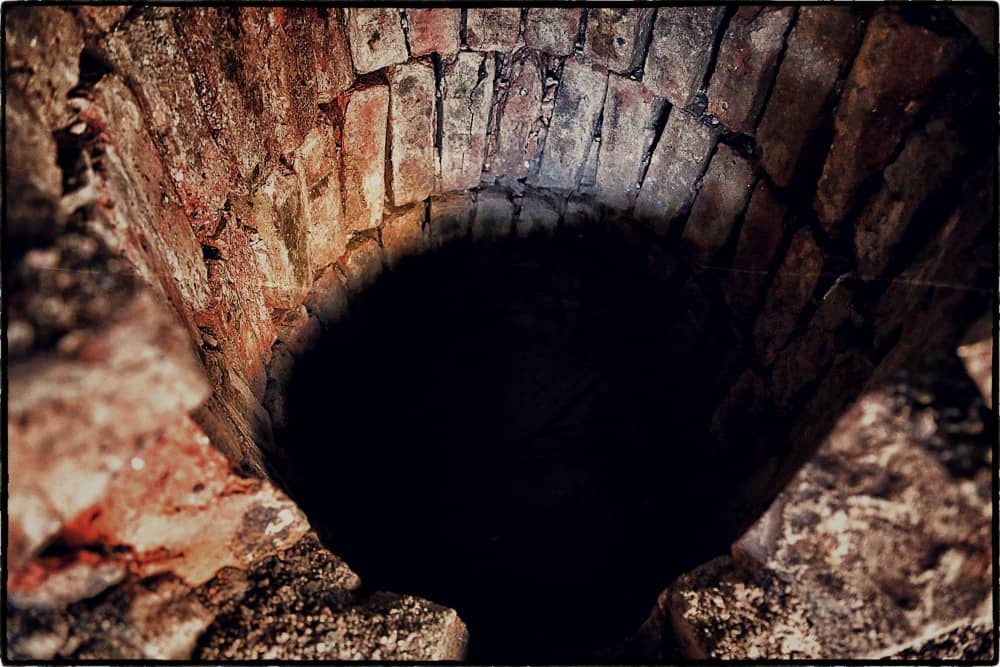
unearthing detritus from the lives of 19th century chicagoans often means coming across mundane fragments of glass, bone and broken bottles. sometimes, though, even a shard of glass or a broken object can prove to be an exceptional oddity- evidence of victorian customs or a clue to some small detail of daily life for the resident of a recently demolished house. what follows is a descriptive gallery of various objects (other than bottles, which has been the ongoing focal point of many past blog posts) found at dig sites around chicago.
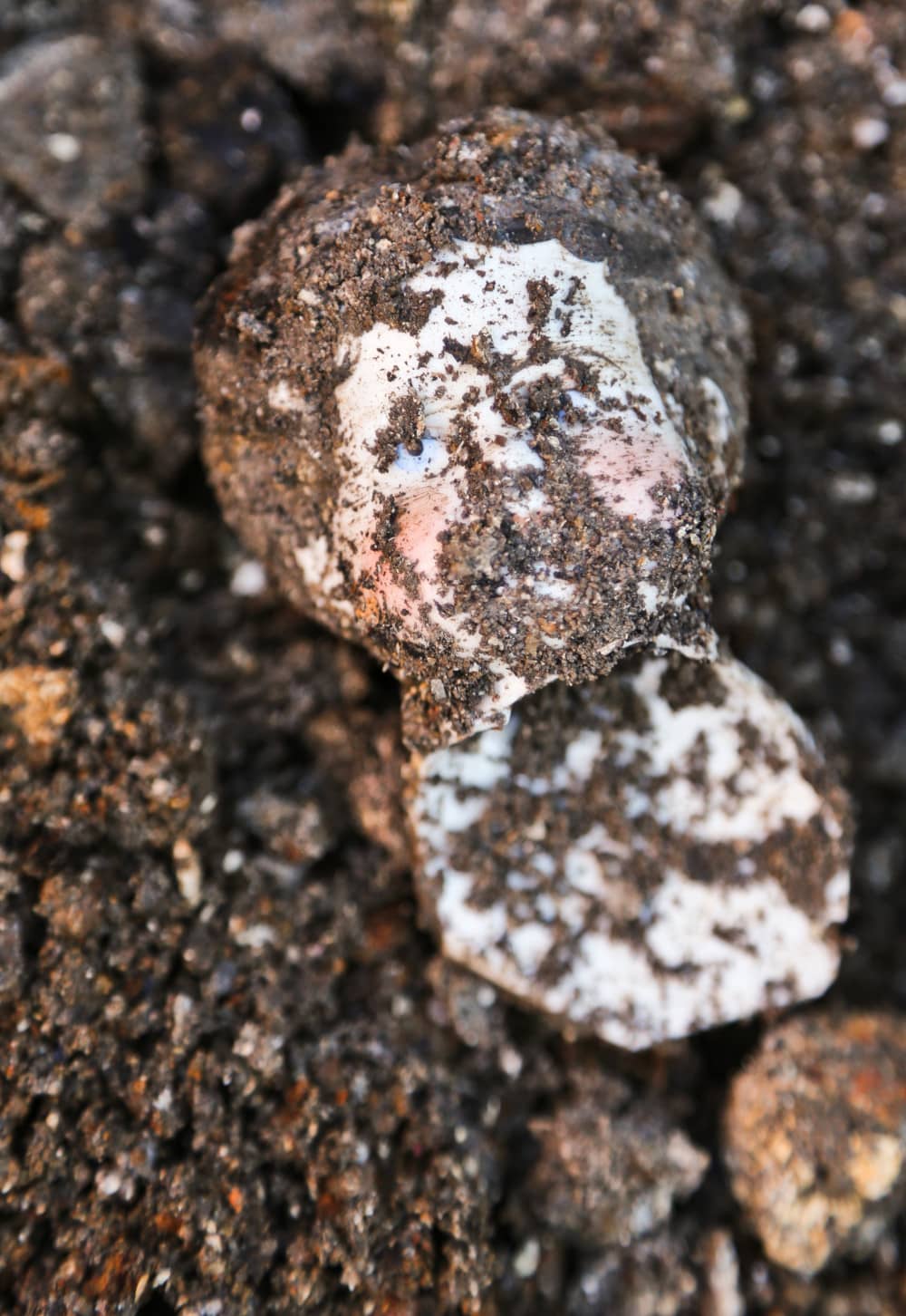
most recently, at a site on grand avenue in the west town neighborhood of chicago, an oddly shaped half-cup was unearthed, along with two bennington glass marbles, and several bottles. the cup exhibits a fluted body and a decorative band with scalloped edge. the semi-circular glass is flat at the back, and marked "tulip cup / o.l. & co. n.y.," indicating it was fabricated by o. lindemann & company of new york, a manufacturer of bird cages. the rare, and unfortunately damaged glass functioned as a seed or water carrier in a canary cage.
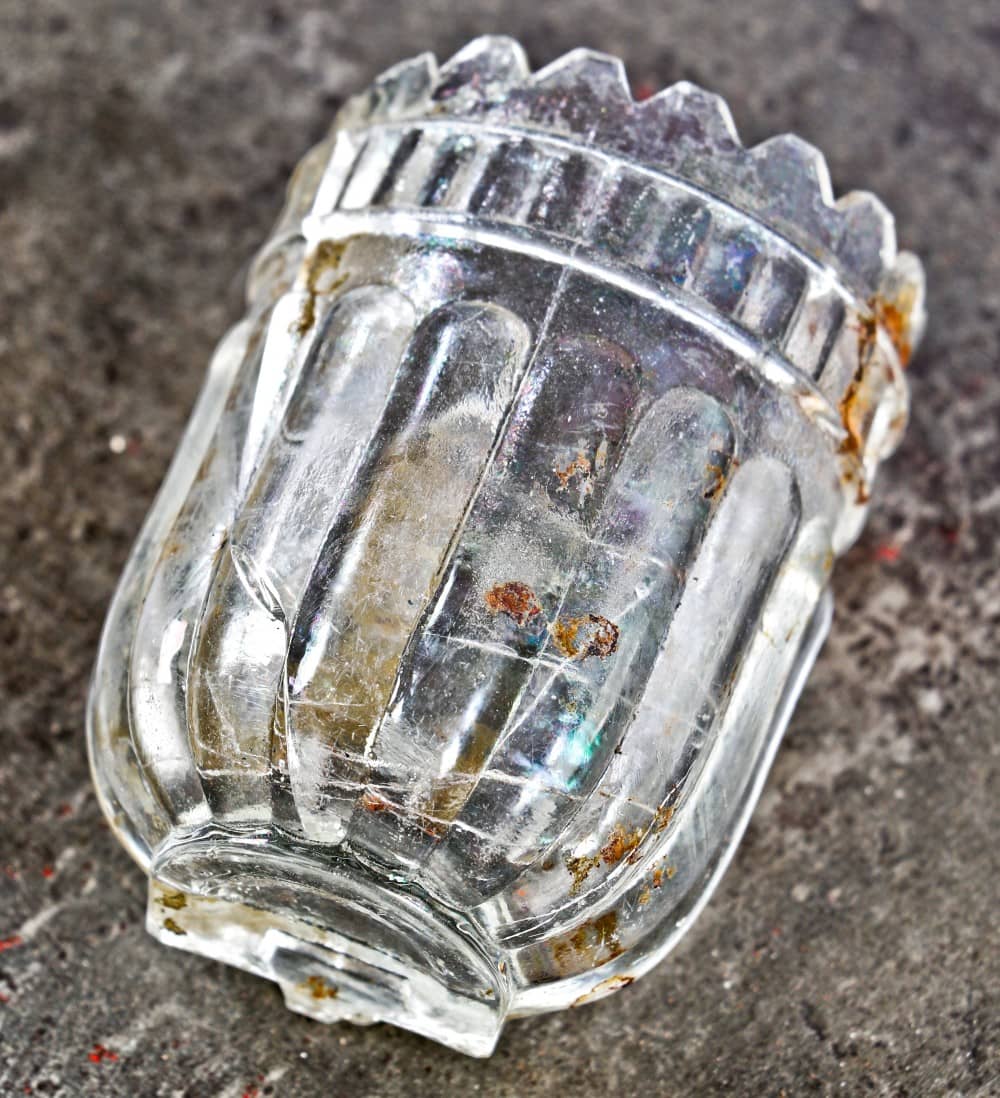
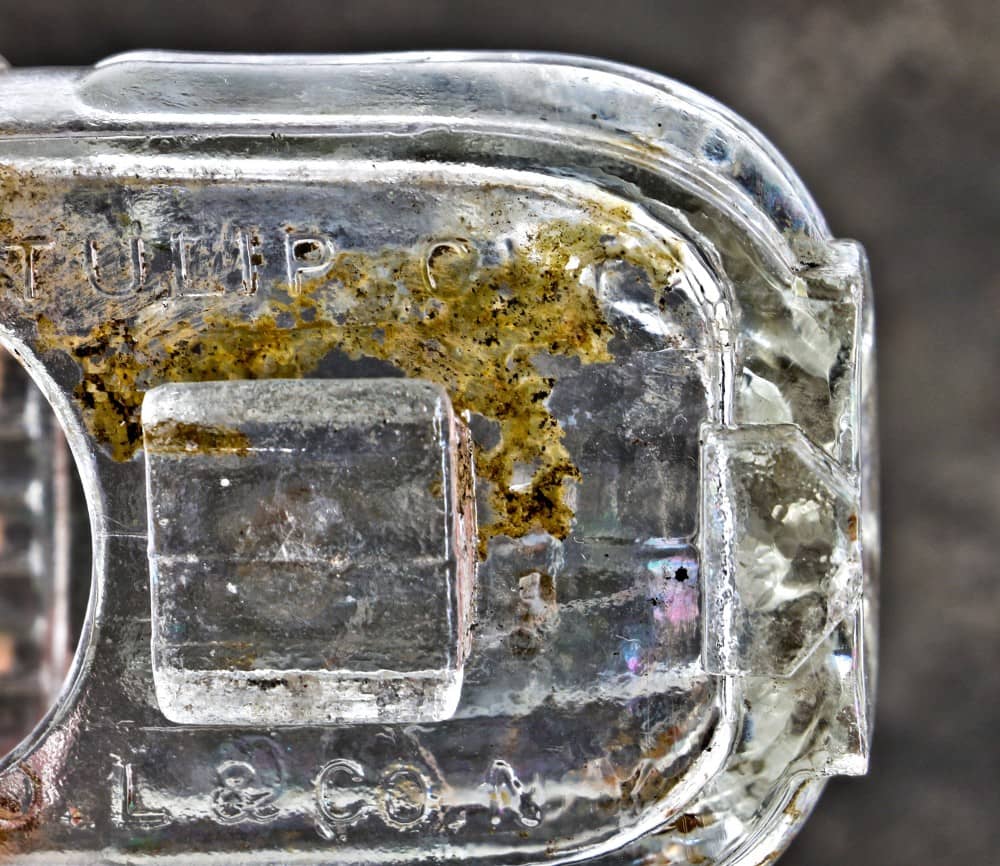
from that same site, i plucked from the mud a diminutive figurine-- a matte porcelain baby about the size of a paperclip. with arms raised and small painted black dots for eyes, the doll has no hair or clothes and only a single identifying feature - the initials "tap" lightly incised on its back. the white bisque victorian-era baby may have been used as a cake topper or as a charm in christmas pudding. many were manufactured in germany in the nineteenth century, and its size indicates it may have been a "penny doll," sold for just one cent.
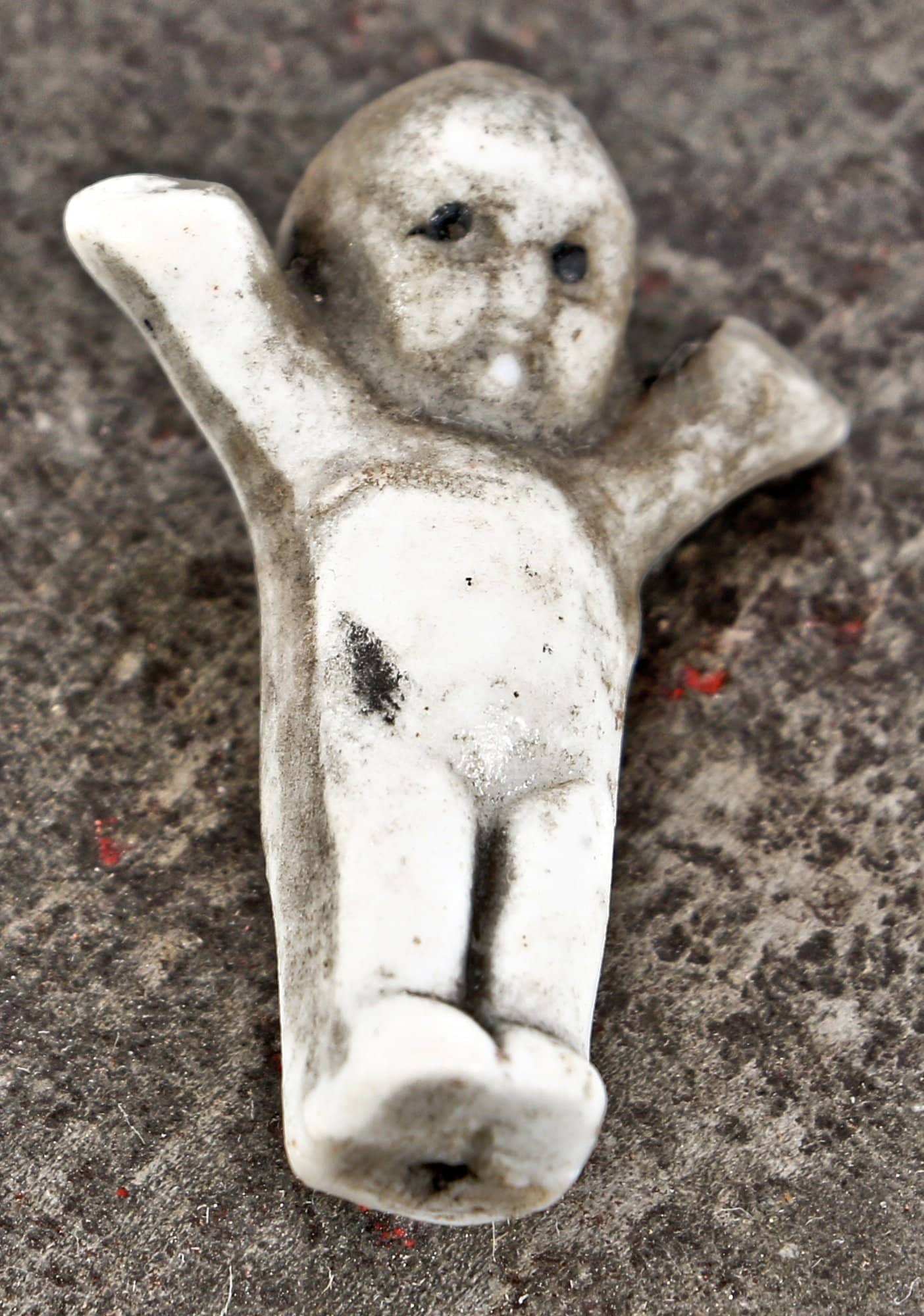
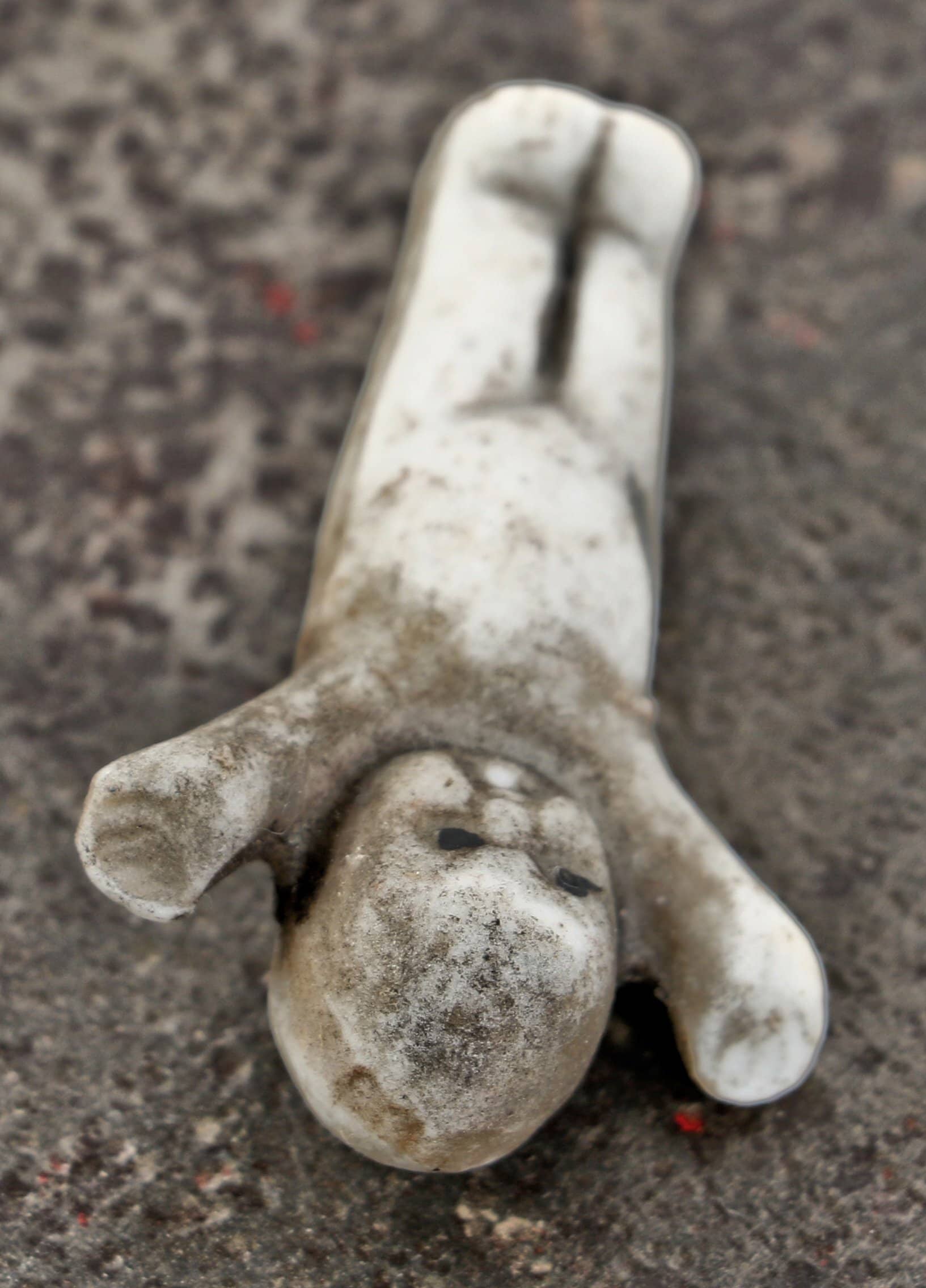
these types of figurines are also commonly known as frozen charlottes, pillar dolls, or bathing babies, depending on their various characteristics. frozen charlotte dolls, for instance, were a specific type of china doll derived from the american folk fable or ballad "fair charlotte," a parable of a young girl who froze to death after refusing to wrap up warmly for a sleigh ride, because she did not want to cover up her pretty dress. similarly, a "frozen charlotte" doll part was discovered at another chicago privy pit late last year.
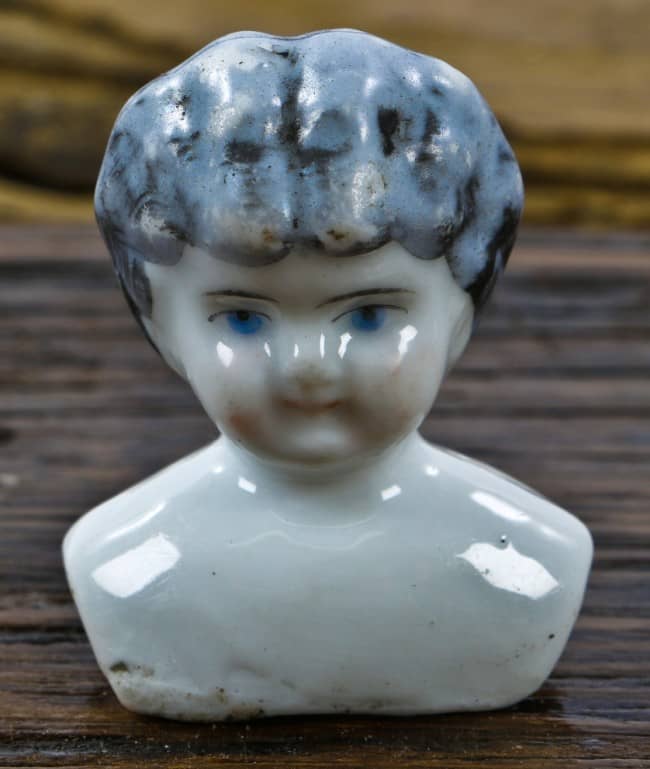
the diminutive figurine is comprised of an upper torso and head, with delicately painted face and molded brown hair. the white glazed face with blue eyes and a low brow, and small features in the forehead, nose and lips. it might be described as having a greiner hairstyle, molded with middle part and in a wavy short style, typified by dolls manufactured in the mid-nineteenth century. antique china dolls were made by various, mostly german companies, from 1836 to the 1940's. glazed porcelain china head dolls are usually found on a wood, cloth or kid body with some having partial china limbs as well. most have molded and painted hair, but some were known to have a wig over a solid bald dome head.
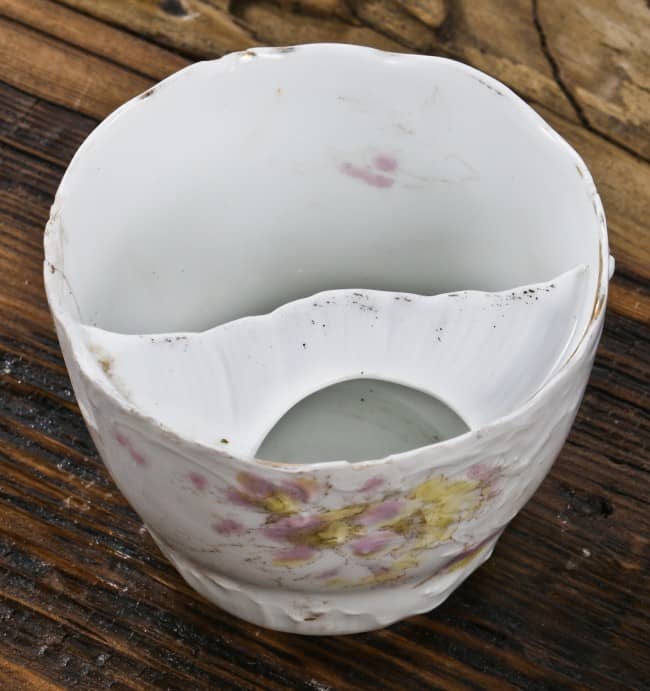
i also recovered a hard to find and all original victorian era porcelain "mustache cup" with floral patterning. the moustache cup is a drinking vessel with a semicircular ledge inside containing a crescent-shaped opening to allow the passage of liquids. the "dam" served as a guard to keep moustaches dry. moustaches flourished throughout the victorian era and often, wax was applied to facial hair to keep its shape. when steaming hot cups of tea or coffee were carried up to the mouth for sipping the steam melted the wax and sent it right into the cup, or otherwise stained the hairs. mustache cups were popular from 1850 to 1900 when the large, flowing mustache was in style. the nearly intact cup is chipped in places at the scalloped and gilded edge, and missing its handle but nonetheless represents an example of a rare masculine tableware accessory. the cup bears no maker's mark, however its general history is known to trace back to harvey adams (a potter born in 1835, whose company operated out of longton, staffordshire, england), acknowledged as having invented the mustache cup in the 1850's to address this problem. the new invention spread all over the european continent and eventually to america (although many american-made moustache cups were marked with names which led buyers to believe they were actually manufactured in england). therefore, with the exception of the quadruple silver moustache cups made in the u.s., it is nowadays extremely difficult to find an authentic victorian moustache cup bearing an american pottery mark.
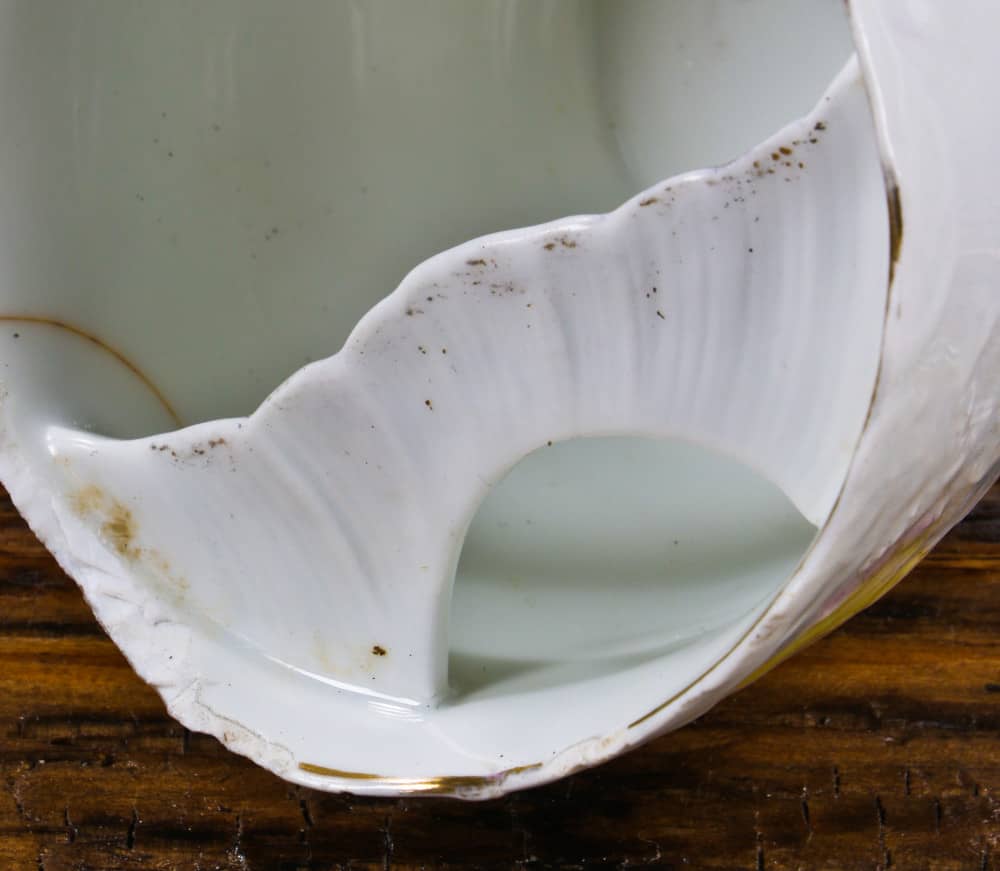
objects like these unlock clues to a specific existence - one can imagine a former resident was a german immigrant, had a mustache, kept a pet bird, or had children whose toys were lost for over a century. the smallest or most mundane of material uncovered contains a plethora of information that at least offers imaginative possibilities to the curious investigator.
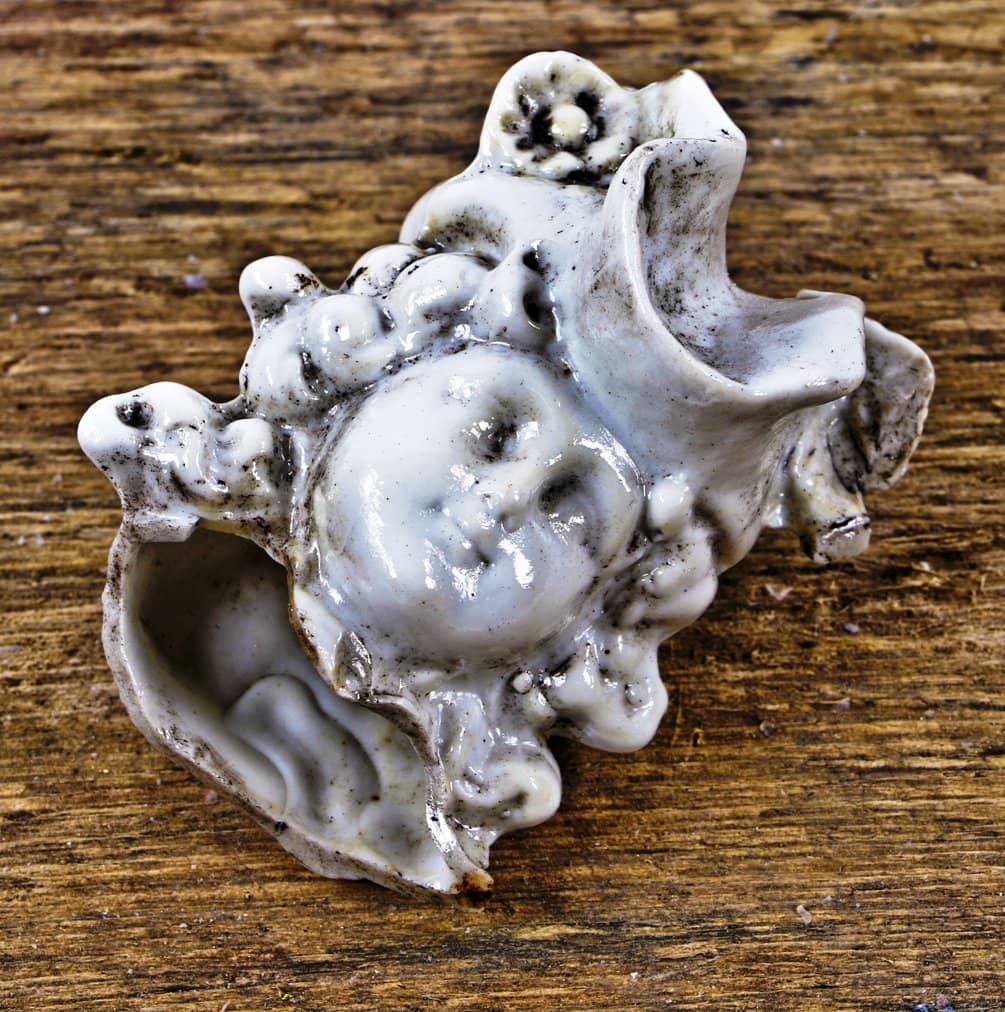
finally, in other cases, a bottle might point toward an existing lot or building, at least revealing what the predecessor on a given lot was. for instance a pair of c.1880's pharmacy bottles uncovered at the grand avenue excavation show that two pharmacies existed within blocks of each other along grand (formerly indiana) avenue.
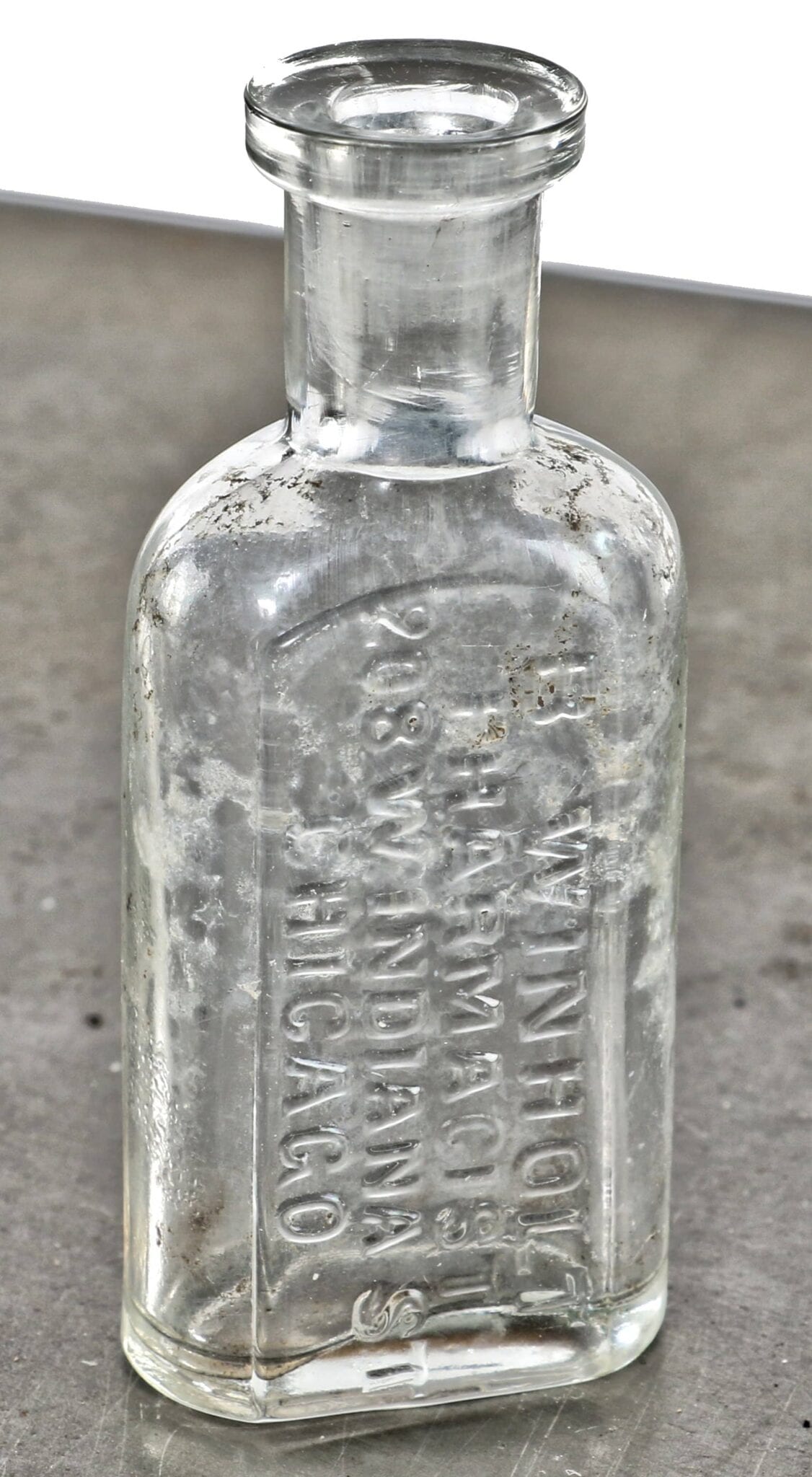
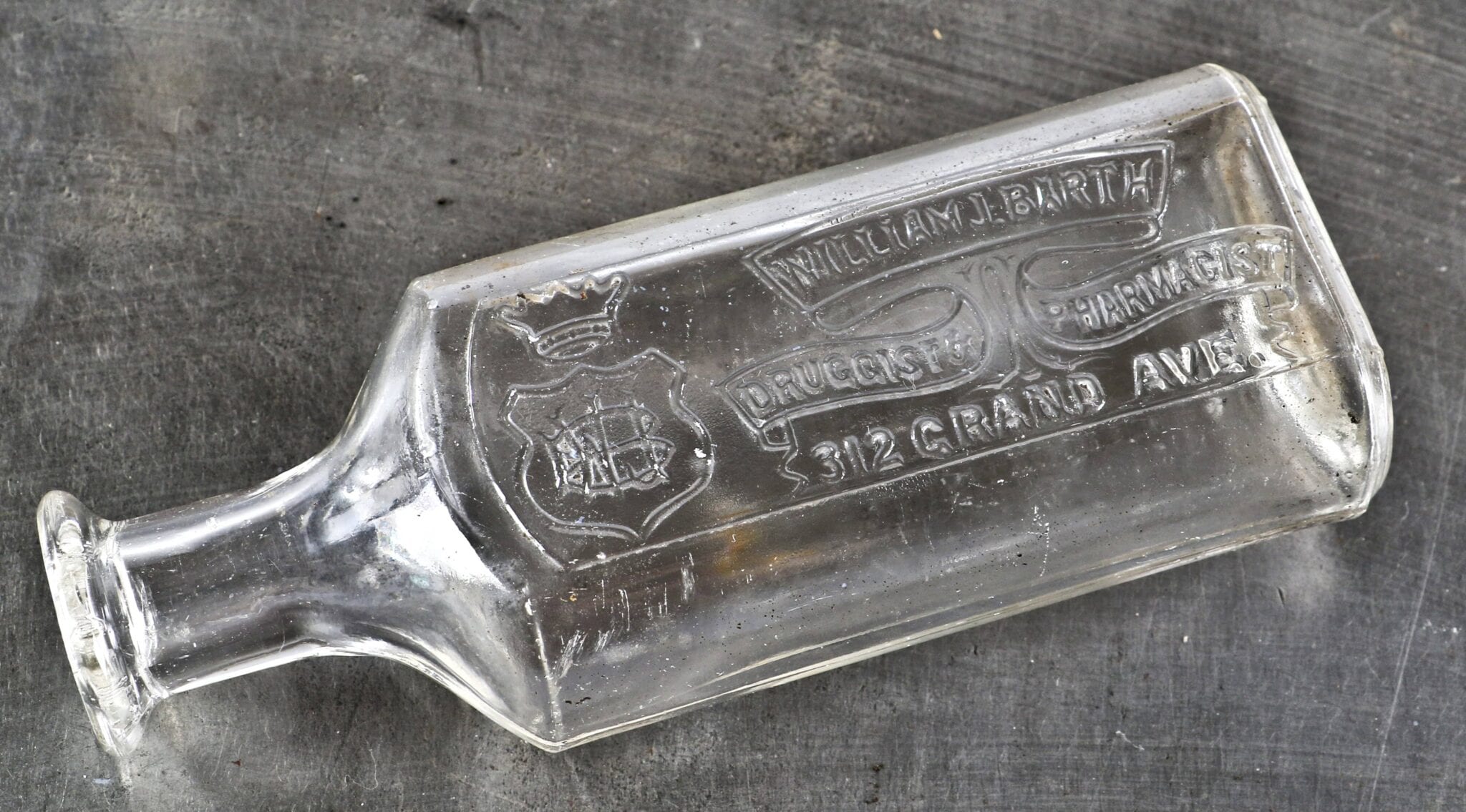
This entry was posted in , Miscellaneous, Salvages, Bldg. 51, Events & Announcements, New Acquisitions, Featured Posts & Bldg. 51 Feed on June 22 2016 by Eric
WORDLWIDE SHIPPING
If required, please contact an Urban Remains sales associate.
NEW PRODUCTS DAILY
Check back daily as we are constantly adding new products.
PREMIUM SUPPORT
We're here to help answer any question. Contact us anytime!
SALES & PROMOTIONS
Join our newsletter to get the latest information

